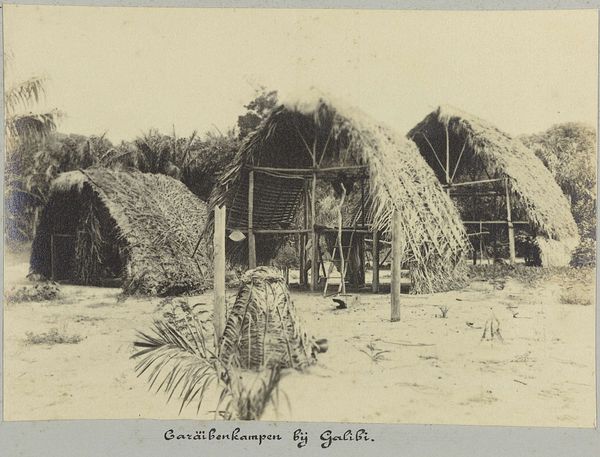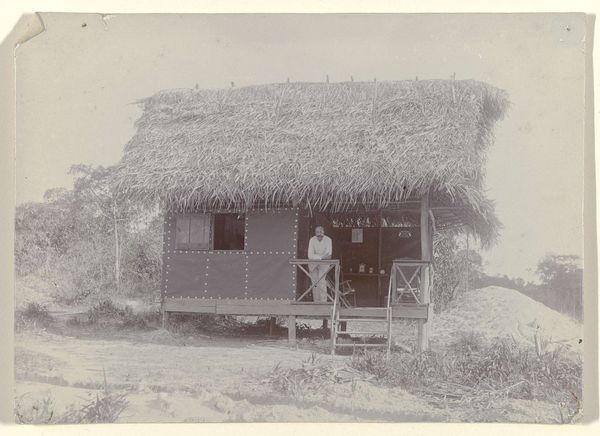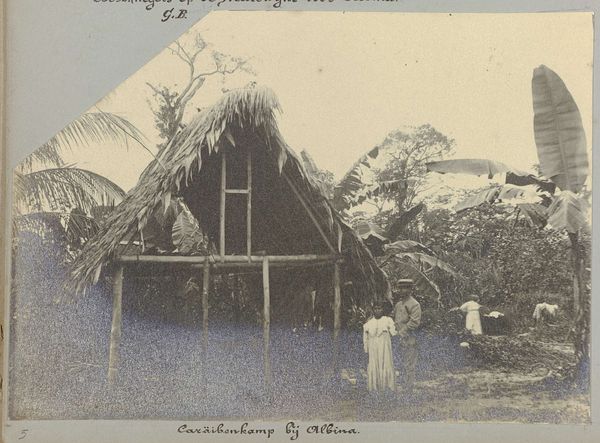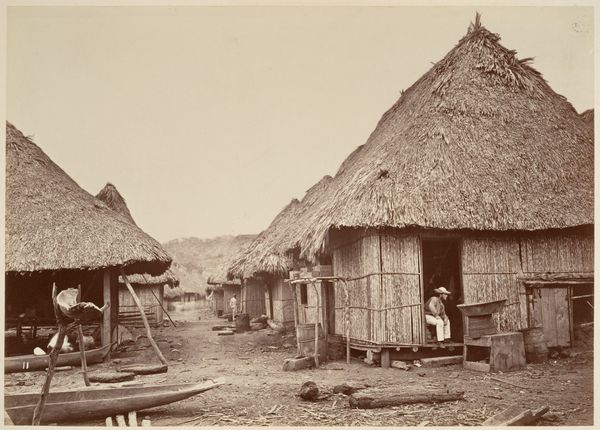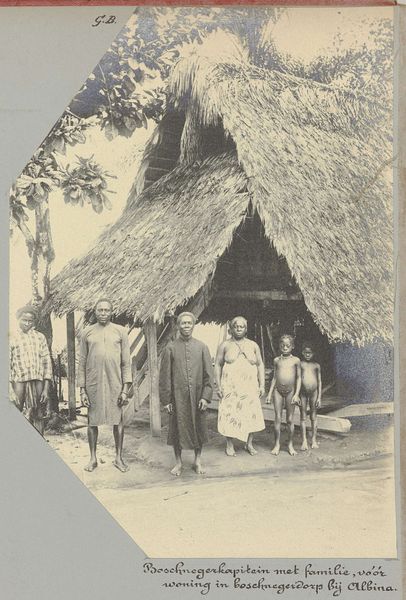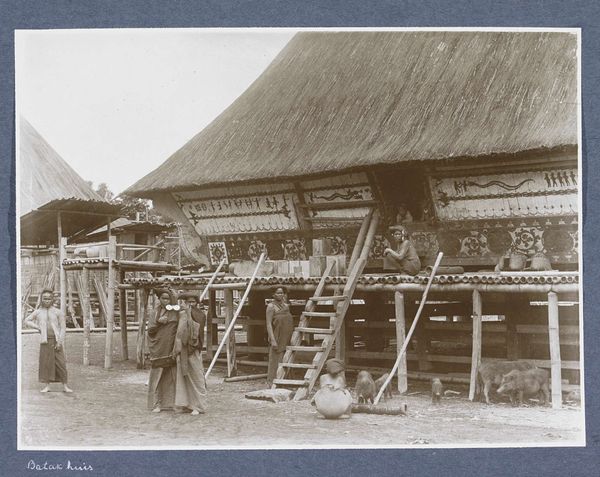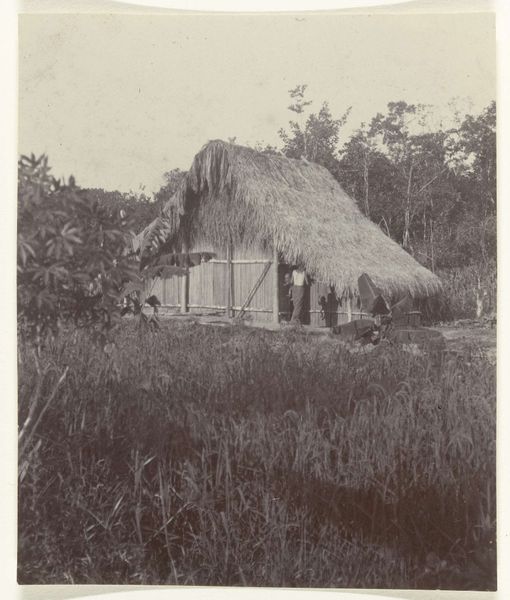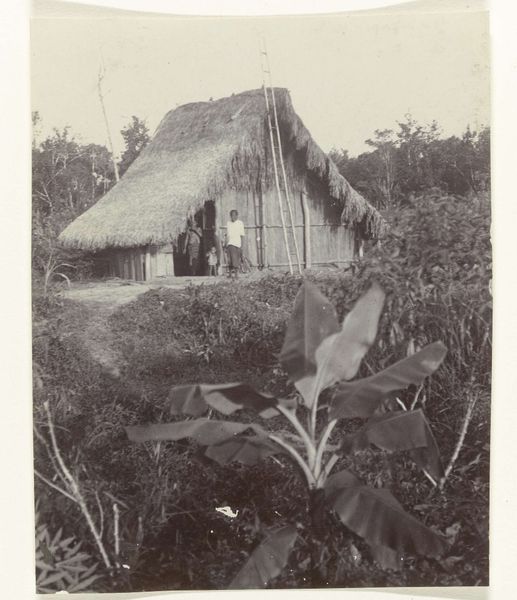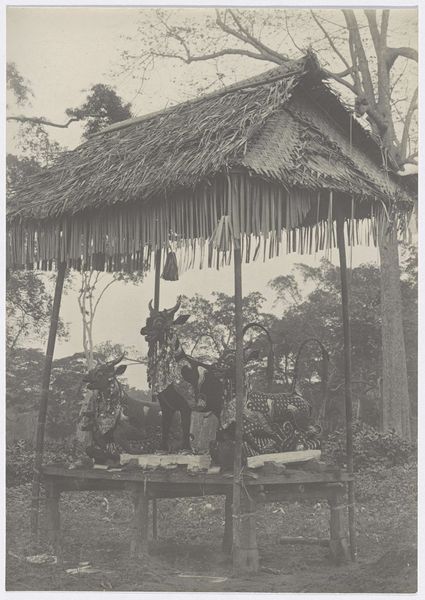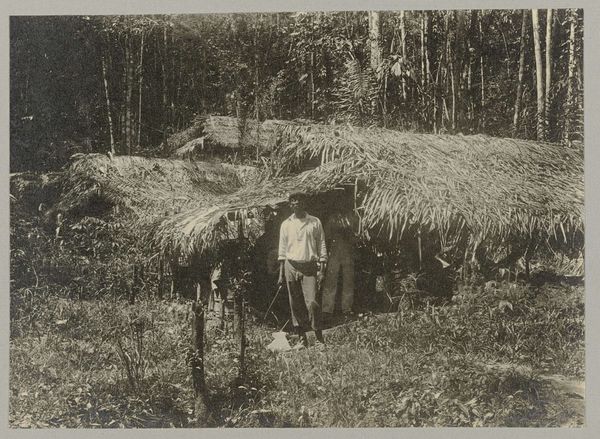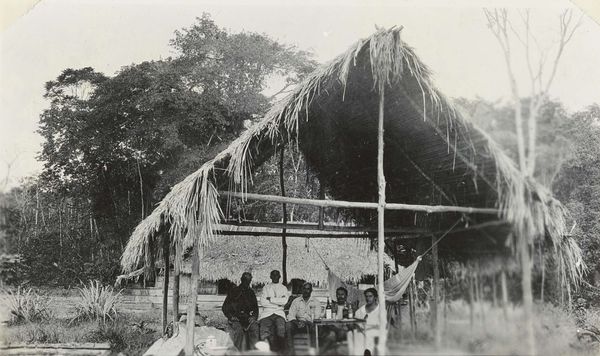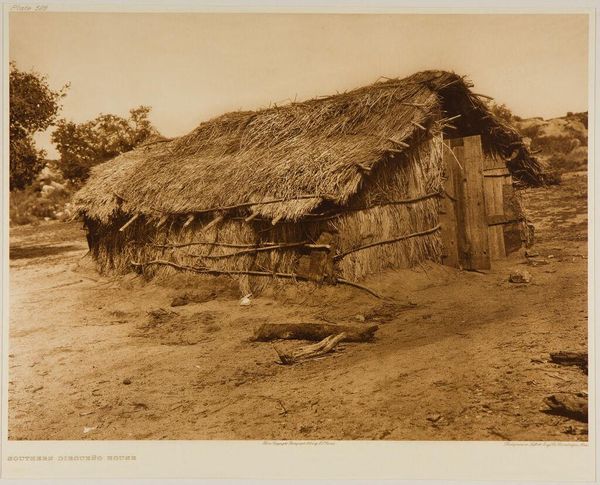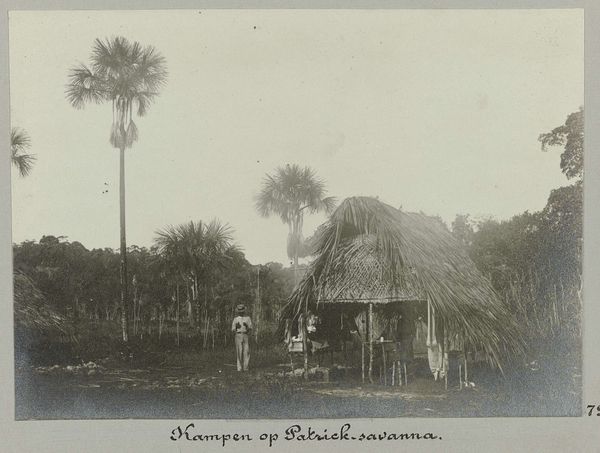
albumen-print, photography, albumen-print, architecture
#
albumen-print
#
portrait
#
photography
#
albumen-print
#
architecture
Dimensions: height 118 mm, width 170 mm
Copyright: Rijks Museum: Open Domain
Curator: This albumen print, entitled "Kinderen voor een woning bij Galibi, Suriname," was taken sometime between 1903 and 1910 by Hendrik Doijer. The scene feels remarkably immediate. Editor: It has a certain gravity. Despite the rustic nature of the dwelling, the children stand with a composed, almost stately air. It really feels timeless, a window into a very particular culture. Curator: Right. The production process of an albumen print would've involved coating paper with egg white and silver nitrate, exposing it through a negative, and then toning and fixing. These were often used for documentary or ethnographic purposes. Doijer was keen on representing indigenous cultures of Suriname, reflecting the social currents and scientific interest in different ethnic groups at the turn of the century. Editor: You can almost smell the thatch from the roof. The photograph serves not only as a record of these structures and individuals, but also transmits a sense of the vernacular; the specific culture rooted in that time and space. Consider the house, which projects as a large enveloping symbol that could connote shelter, community, and ancestry. Curator: Indeed. What I find compelling is how the physical properties of the photograph speak to larger themes of labor, resource management, and colonial power. Look closely—you can observe the intricate texture of the woven thatch roof, evidencing the physical labor invested in creating shelter using local materials. These structures reveal innovative responses to the environment. Editor: The very posture of those kids also brings in nuances to the picture. One stands seemingly older, and maybe even protective. Their presence certainly creates narrative possibilities; about kinship, upbringing and life in Suriname back in those times. Curator: Well, by focusing on the labor, the materials, and the conditions under which this image was created, we can enrich our understanding of indigenous societies, resist simplistic romanticizations and move towards a more nuanced understanding of indigenous cultures. Editor: Seeing this work definitely underscored how symbols manifest within our realities—architecture and portraiture blend here, communicating both immediate facts as well as cultural depths.
Comments
No comments
Be the first to comment and join the conversation on the ultimate creative platform.
